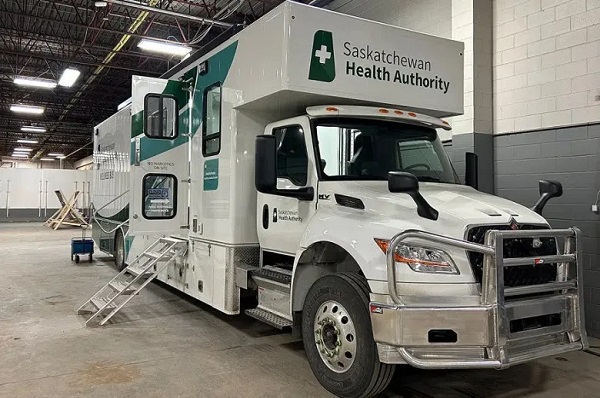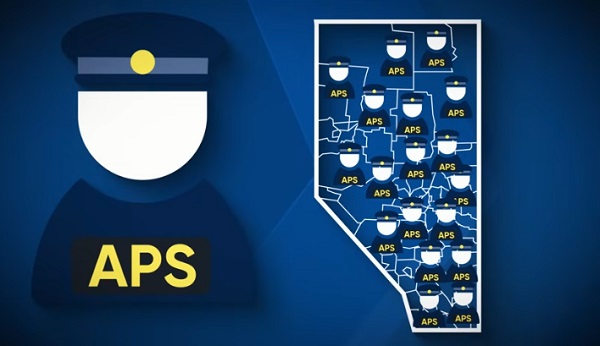Addictions
14-year old Kamilah Sword died after becoming addicted to diverted “safer supply” opioids. Now her loved ones are speaking up.


By Adam Zivo
New documentary exposes suffering caused by Canada’s “safer supply” programs
It has been widely reported that “safer supply” opioids are getting into the hands of youth and causing new addictions and deaths – but this fact, terrible as it is, can feel abstract to many. That’s why I’ve released this new 28-minute documentary, “Government Heroin 2: The Invisible Girls,” to illustrate the terrible harms being inflicted upon families by this failed policy.
The film focuses on the story of Kamilah Sword, a 14-year-old girl from Metro Vancouver who died of drug-related causes in 2022. Before her death, Kamilah and her friends had been using hydromorphone, an opioid as potent as heroin, that originated from government-funded safer supply programs.
These programs claim to reduce overdoses and deaths by providing addicts with pharmaceutical-grade addictive drugs – typically hydromorphone – as an alternative to riskier street substances. In reality, though, most addicts simply divert (sell or trade) their safer supply to the black market to acquire stronger drugs, such as illicit fentanyl. This then floods surrounding communities with hydromorphone, crashing its street price by up to 95 per cent and fueling new addictions.
Kamilah and her friends were victims of this corrupt system.
In 2021, hydromorphone pills suddenly became popular at their school. The pills, which were colloquially called “dillies,” were abundant and cheap and many teenagers did not believe that they were dangerous to experiment with, as they had originally been prescribed by the government and were marketed as “safe.”
The girls did not understand that they were essentially playing with heroin. Not until it was too late. But they were hopelessly addicted by then and as their opioid tolerances grew, so did their appetite for dillies.
Two of Kamilah’s friends – Amelie North and Madison (a pseudonym) – escalated to using fentanyl and eventually went to rehab. But Kamilah herself was not so lucky. She was found dead, curled up in the fetal position in her bed and with foam on the corner of lips, one warm August morning.
It was only after her death that her father, Greg Sword, learned about how safer supply had destroyed the lives of his daughter and her friends. Amelie and Madison explained to him, for example, how they would sometimes travel downtown and purchase dillies directly from safer supply patients, who gave the cheapest prices.
The Trudeau Liberals and BC NDP have spent years aggressively advocating for safer supply and have repeatedly denied that diversion is a serious issue that harms youth. So when Kamilah’s loved ones went public with their story in the summer of 2023, it caused a national scandal.
The situation was further complicated when the BC Coroners Service, after a considerable delay, released Kamilah’s coroner’s report in late December 2023. The report ruled out hydromorphone as a cause of death and claimed that Kamilah had died of a cardiac arrhythmia (irregular heartbeat) caused by cocaine and MDMA.
But when several physicians and forensic pathologists reviewed the report, they noticed some concerning irregularities.
As Kamilah’s body was not sent to autopsy (a scandal in itself), it would’ve been impossible to confidently diagnose an arrhythmia as a cause of death. And in complex polydrug cases such as Kamilah’s, the best practice would have been to list every major death as contributing to mortality – including hydromorphone.
Additionally, the coroner claimed that it was unknown from where the hydromorphone in Kamilah’s body had originated – even though Kamilah’s friends and family had been clear, across several media reports, that the drugs were diverted safer supply. It was impossible that the BC Coroners Service would have been unaware of this, but, strangely enough, no attempt was made by the coroner to interview Kamilah’s loved ones about her death, despite such interviews being regular practice.
Subscribe for free to get BTN’s latest news and analysis, or donate to our journalism fund.
Greg Sword, along with Amelie and her mother, recently launched a class action lawsuit against a wide array of defendants – including the governments of British Columbia and Canada – for irresponsibly marketing and prescribing safer supply, and for their “wilful blindness” to the prevalence and dangers of diversion.
The tragedy of this story cannot be adequately captured with words. The tears of a mourning father need to be seen and heard to be grasped. The sobs of a mother who laments her daughter’s fentanyl addiction has no substitute.
This is why Government Heroin 2: The Invisible Girls exists. To give these families a chance to be properly understood. And to better inform the public, through visceral storytelling, of the outrageous failures of Canada’s institutions and addiction policies.
This film is the second in a series. The first installment – “Government Heroin” – focuses on a 25-year-old student in Ontario who purchased thousands of diverted safer supply films. That 19-minute film provides a slightly more technical overview of the safer supply diversion scandal, so while each film stands on its own, the two also pair together very well (with a brisk total runtime of only 47 minutes).
I implore you to watch this new documentary, and its predecessor, too, if possible. They are sad and challenging, and yet vitally necessary for anyone who is concerned about Canada’s eroding public order and, of course, the predations of organized crime.
Subscribe to Break The Needle. Our content is always free – but if you want to help us commission more high-quality journalism, consider getting a voluntary paid subscription.
Addictions
New RCMP program steering opioid addicted towards treatment and recovery

News release from Alberta RCMP
Virtual Opioid Dependency Program serves vulnerable population in Red Deer
Since April 2024, your Alberta RCMP’s Community Safety and Well-being Branch (CSWB) has been piloting the Virtual Opioid Dependency Program (VODP) program in Red Deer to assist those facing opioid dependency with initial-stage intervention services. VODP is a collaboration with the Government of Alberta, Recovery Alberta, and the Alberta RCMP, and was created to help address opioid addiction across the province.
Red Deer’s VODP consists of two teams, each consisting of a police officer and a paramedic. These teams cover the communities of Red Deer, Innisfail, Blackfalds and Sylvan Lake. The goal of the program is to have frontline points of contact that can assist opioid users by getting them access to treatment, counselling, and life-saving medication.
The Alberta RCMP’s role in VODP:
- Conducting outreach in the community, on foot, by vehicle, and even UTV, and interacting with vulnerable persons and talking with them about treatment options and making VODP referrals.
- Attending calls for service in which opioid use may be a factor, such as drug poisonings, open drug use in public, social diversion calls, etc.
- Administering medication such as Suboxone and Sublocade to opioid users who are arrested and lodged in RCMP cells and voluntarily wish to participate in VODP; these medications help with withdrawal symptoms and are the primary method for treating opioid addiction. Individuals may be provided ongoing treatment while in police custody or incarceration.
- Collaborating with agencies in the treatment and addiction space to work together on client care. Red Deer’s VODP chairs a quarterly Vulnerable Populations Working Group meeting consisting of a number of local stakeholders who come together to address both client and community needs.
While accountability for criminal actions is necessary, the Alberta RCMP recognizes that opioid addiction is part of larger social and health issues that require long-term supports. Often people facing addictions are among offenders who land in a cycle of criminality. As first responders, our officers are frequently in contact with these individuals. We are ideally placed to help connect those individuals with the VODP. The Alberta RCMP helps those individuals who wish to participate in the VODP by ensuring that they have access to necessary resources and receive the medical care they need, even while they are in police custody.
Since its start, the Red Deer program has made nearly 2,500 referrals and touchpoints with individuals, discussing VODP participation and treatment options. Some successes of the program include:
- In October 2024, Red Deer VODP assessed a 35-year-old male who was arrested and in police custody. The individual was put in contact with medical care and was prescribed and administered Suboxone. The team members did not have any contact with the male again until April 2025 when the individual visited the detachment to thank the team for treating him with care and dignity while in cells, and for getting him access to treatment. The individual stated he had been sober since, saying the treatment saved his life.
- In May 2025, the VODP team worked with a 14-year-old female who was arrested on warrants and lodged in RCMP cells. She had run away from home and was located downtown using opioids. The team spoke to the girl about treatment, was referred to VODP, and was administered Sublocade to treat her addiction. During follow-up, the team received positive feedback from both the family and the attending care providers.
The VODP provides same-day medication starts, opioid treatment transition services, and ongoing opioid dependency care to people anywhere in Alberta who are living with opioid addiction. Visit vodp.ca to learn more.
“This collaboration between Alberta’s Government, Recovery Alberta and the RCMP is a powerful example of how partnerships between health and public safety can change lives. The Virtual Opioid Dependency Program can be the first step in a person’s journey to recovery,” says Alberta’s Minister of Mental Health and Addiction Rick Wilson. “By connecting people to treatment when and where they need it most, we are helping build more paths to recovery and to a healthier Alberta.”
“Part of the Alberta RCMP’s CSWB mandate is the enhancement of public safety through community partnerships,” says Supt. Holly Glassford, Detachment Commander of Red Deer RCMP. “Through VODP, we are committed to building upon community partnerships with social and health agencies, so that we can increase accessibility to supports in our city and reduce crime in Red Deer. Together we are creating a stronger, safer Alberta.”
Addictions
Saskatchewan launches small fleet of wellness buses to expand addictions care

By Alexandra Keeler
Across Canada, mobile health models are increasingly being used to offer care to rural and underserved communities
Saskatchewan has launched a small fleet of mobile wellness buses to improve access to primary health care, mental health and addiction services in the province.
The first bus began operating in Regina on Feb. 12. Another followed in Prince Albert on March 21. Saskatoon’s bus was unveiled publicly on April 9. All three are former coach buses that have been retrofitted to provide health care to communities facing barriers to access.
“Mobile health units are proven to improve outcomes for people facing barriers to healthcare,” Kayla DeMong, the executive director of addiction treatment centre Prairie Harm Reduction, told Canadian Affairs in an email.
“We fully support this innovative approach and are excited to work alongside the health bus teams to ensure the people we support receive the care they need, when and where they need it.”
Wellness buses
Like all provinces, Saskatchewan has been grappling with the opioid crisis.
In 2023, an estimated 457 individuals died from overdoses in the province. In 2024, that number fell to 346. But the province continues to struggle with fatal and non-fatal overdoses.
In late February, Saskatoon firefighters responded to more than 25 overdoses in a single 24-hour period. Just over a week later, they responded to 37 overdoses within another 24-hour window.
Saskatchewan’s wellness buses are part of the province’s plan to address these problems. In April 2025, the province announced $2.4 million to purchase and retrofit three coach buses, plus $1.5 million in annual operating funds.
The buses operate on fixed schedules at designated locations around each city. Each bus is staffed with a nurse practitioner, nurse and assessor coordinator who offer services such as overdose reversal kits, addiction medicine and mental health referrals.
“By bringing services directly to where people are, the health buses foster safer, more welcoming spaces and help build trusting relationships between community members and care providers,” said DeMong, executive director of Prairie Harm Reduction.
Saskatoon-based Prairie Harm Reduction is one of the local organizations that partners with the buses to provide additional support services. Prairie Harm Reduction provides a range of family, youth and community supports, and also houses the province’s only fixed supervised consumption site.
The mobile model
Saskatchewan is not the only province using wellness buses. Across Canada, mobile health models are increasingly being used to expand access to care in rural and underserved communities.
In Kingston, Ont., the Street Health Centre operates a retrofitted RV called PORCH (Portable Outreach Care Hub) that serves individuals struggling with homelessness and addiction.
“Our outreach services are extremely popular with our clients and community partners,” Donna Glasspoole, manager at Street Health Centre, said in an emailed statement.
“PORCH hits the road two to three days/week and offers a variety of services, which are dependent on the health care providers and community partners aboard.”
Street Health Centre also has a shuttle service that picks up clients in shelters and brings them to medical clinics or addiction medicine clinics.
The PORCH vehicles are not supported by provincial funding, but instead rely on support from the United Way and other grants. Glasspoole says the centre’s permanent location — which does receive government funding — is more cost-effective to operate.
“The vehicles are expensive to operate and our RV is not great in winter months and requires indoor parking,” she said.

Politically palatable
Many mobile health models currently do not provide controversial services such as supervised drug consumption.
The Saskatchewan Health Authority told Canadian Affairs the province’s new wellness buses will not offer supervised consumption services or safer supply, where drug users are given prescribed opioids as an alternative to toxic street drugs.
“There are no plans to provide supervised consumption services from the wellness buses,” Saskatchewan Health Authority spokesperson Courtney Markewich told Canadian Affairs in a phone call.
This limited scope may make mobile services more politically palatable in provinces that have resisted harm reduction measures.
In Ontario, some harm reduction programs have shifted to mobile models following Premier Doug Ford’s decision to suspend supervised consumption services located within 200 metres of schools and daycares.
In April, Toronto Public Health ended operations at its Victoria Street fixed consumption site, replacing it with street outreach and mobile vans.
The Ontario government’s decision to close the sites is part of a broader pivot away from harm reduction. The province is investing $378 million to transition suspended sites into 19 new “HART Hubs” that offer primary care, mental health, addictions treatment and other supports.
Glasspoole says that what matters most is not whether services are provided at fixed or mobile locations, but how care is delivered.
Models that “reduce barriers to care, [are] non-judgemental, and [are staffed by] trauma-informed providers” are what lead more people toward treatment and recovery, she said in her email.
In Saskatchewan, DeMong hopes the province’s new wellness buses help address persistent service gaps and build trust with underserved communities.
“This initiative is a vital step toward filling long-standing gaps in the continuum of care by providing low-barrier, community-based access to health-care services,” she said.
This article was produced through the Breaking Needles Fellowship Program, which provided a grant to Canadian Affairs, a digital media outlet, to fund journalism exploring addiction and crime in Canada. Articles produced through the Fellowship are co-published by Break The Needle and Canadian Affairs.
Subscribe to Break The Needle
-

 COVID-192 days ago
COVID-192 days agoOntario man launches new challenge against province’s latest attempt to ban free expression on roadside billboards
-

 Energy2 days ago
Energy2 days agoThis Canada Day, Celebrate Energy Renewal
-

 COVID-1916 hours ago
COVID-1916 hours agoNew Peer-Reviewed Study Affirms COVID Vaccines Reduce Fertility
-

 Business12 hours ago
Business12 hours agoOttawa Funded the China Ferry Deal—Then Pretended to Oppose It
-

 Alberta1 day ago
Alberta1 day agoAlberta Next Takes A Look At Alberta Provincial Police Force
-

 Alberta2 days ago
Alberta2 days agoCanadian Oil Sands Production Expected to Reach All-time Highs this Year Despite Lower Oil Prices
-

 MAiD14 hours ago
MAiD14 hours agoCanada’s euthanasia regime is not health care, but a death machine for the unwanted
-

 International2 days ago
International2 days agoPresident Xi Skips Key Summit, Adding Fuel to Ebbing Power Theories






